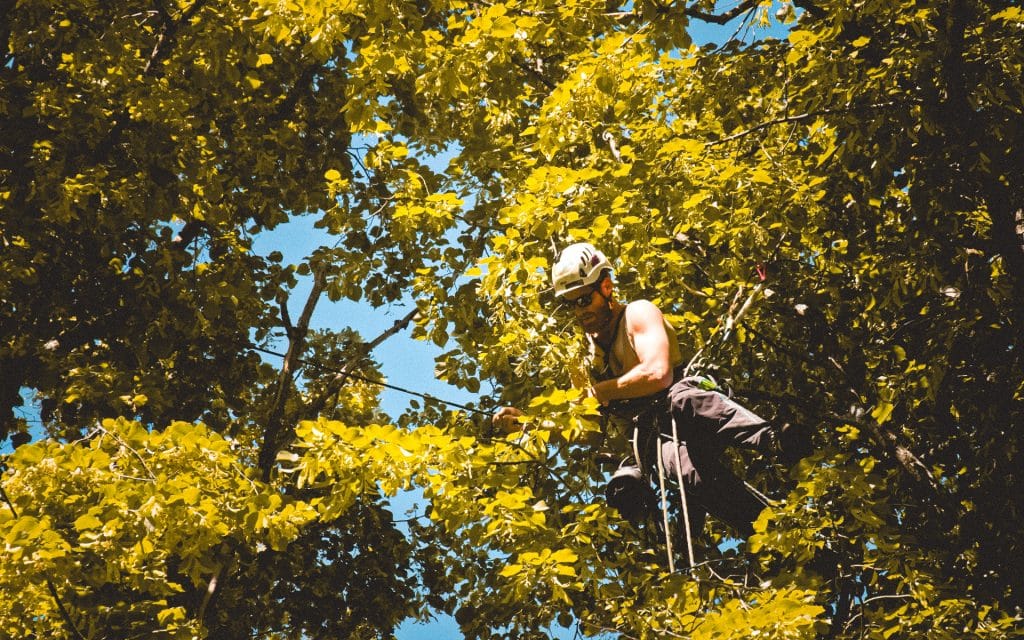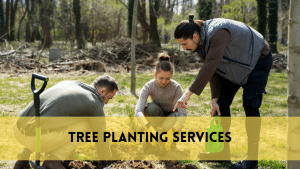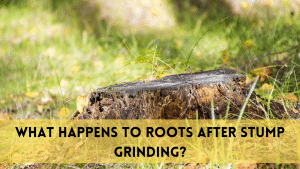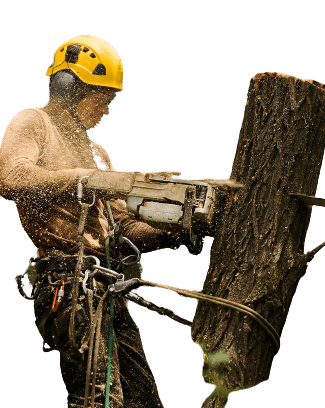When a palm tree is removed, whether due to illness, injury, or landscape modifications, the leftover stump can be both unsightly and an annoyance in your outdoor space. Removing a palm tree stump is important for a variety of reasons. Stumps not only detract from the appearance of your garden, but they can also obstruct new plantings or building projects. Additionally, deteriorating palm roots may attract pests and pose a safety threat. Learn How To Remove a Palm Tree Stump By Hand?
The importance of removing palm tree stump by hand
While mechanical methods like stump grinders are available for removing palm tree stumps, doing it by hand has various advantages. Hand removal provides for better precision, especially in small or delicate places. It’s also a more environmentally friendly strategy because it avoids the noise, vibrations, and potential damage associated with large machinery. This guide will take you through the step-by-step procedure for securely and effectively removing a palm tree stump using manual approaches.
Tools and safety equipment:
When removing a palm tree stump by hand, safety should be the main consideration. Wear the following safety gear:
- Protect your hands from splinters and sharp tools by wearing heavy-duty gloves.
- Eye protection, such as safety goggles or a face shield,
- Work boots with reinforced toes for added foot protection
- Ear protection is required when operating loud tools such as chainsaws.
- Before beginning, properly evaluate the work area for potential risks such as rocks, buried wires, or utility lines. Remove these dangers to create a safe working environment.
For manual palm tree stump removal, you’ll need the following tools:
- A chainsaw or reciprocating saw to cut the stump.
- A shovel for digging around the stump.
- A mattock or pickaxe for root excavation.
- A pry bar or stump lever for leveraging
- Loppers or pruning saws for root pruning
Optional tools can make the process easier to manage.
- Use a hand winch or a come-along to increase pulling power.
- A wheelbarrow for moving debris.
- A garden hose or other supply of water for softening the soil.
- Tarps are used to collect and transport soil and trash.
Preparing the work area
Remove any objects or impediments in the vicinity of the stump that could impede your work or constitute a safety risk. Clear your workstation.
Adequate ventilation is essential while operating power equipment such as chainsaws. Work outside to reduce your exposure to exhaust fumes.
Mark your work area properly to avoid accidentally injuring surrounding structures or vegetation. Consider barricading the area.
Assessing the Stump
Evaluate the size and condition of the stump to figure out the amount of effort required for removal. Larger or more deteriorated stumps may be more difficult.
Determine the precise type of palm tree, as different palm species have distinct root structures and wood densities, which affect removal strategies.
Determine the depth of the palm tree’s root system. Deeper roots may necessitate more extensive excavation.
Cutting and Trimming the Stump
Using a chainsaw or reciprocating saw, start by making horizontal cuts over the top of the stump, creating a level and manageable surface. Make these cuts as level as possible to make future removal stages easier.
Continue cutting until you’ve created a level, even surface on top of the stump. This gives stability during the removal procedure.
Digging Around the Stump
Loosening the Soil and Exposing the Roots: Dig a trench around the stump, gradually exposing the roots with a shovel. Begin at the outer edge of the stump and work your way inward. This loosens the soil and allows for easier root access.
Removing Rocks and Debris: While excavating, keep an eye out for rocks, stones, or other debris that could impede the process. To avoid obstacles, remove them from the work area.
Pruning and Cutting the Roots
Locate the main roots that extend from the stump. These are normally the thickest and most important for stability
Carefully prune and clip the primary roots with loppers or pruning saws. Make clean cuts to avoid splintering and tool damage.
Leveraging and Rocking the Stump
Using a Pry Bar or Stump Lever: Place a pry bar or stump lever beneath the stump’s edge. Gradually lift and rock the stump back and forth. This motion aids in releasing it from the soil.
Gradually Getting the Stump Out of the Soil: Continue rocking and leveraging the stump while exerting upward pressure. As the stump loosens, you can lift it further until it entirely detaches from the soil.
Related Posts:
How to Remove Banana Trees? Easy Steps to Explain
How to remove a palm tree stump by hand?
Rocking and Pulling Method
- This method is best suited for tiny stumps with limited root systems.
- After cutting, trimming, and freeing the stump, rock it back and forth with a pry bar or stump lever.
- Exert simultaneous upward pressure to remove the stump from the soil.
- Continue rocking and tugging until the stump is completely clear of the earth.
- Enlist the assistance of others if necessary to guarantee a safe and effective removal operation.
Ensuring Complete Removal of the Stump
After removing the stump, check the hole for any lingering roots or debris.
Make sure the space is clean and clear of any impediments to future landscaping work.
Site Cleanup
Fill the hole that the stump removal left behind first. To level the ground, use the excavated dirt or an appropriate fill material.
Tamp the soil down to compact it and prevent it from settling over time.
Check that the filled area is level with the surrounding ground.
Removal of debris
Remove any debris, wood chips,branches or leftover root fragments from the work Area
Collect the disposal of these material properly, recycling or repurposing them if possible
Rake the dirt and surrounding area to make it look smooth and neat.
Consider growing grass, ground cover, or other landscaping features to revitalize and beautify the space.
FAQS
1. Is it required to get rid of a palm tree stump?
Yes, removing a palm tree stump is a good idea for both aesthetic and functional reasons. Stumps can be ugly, disrupt landscaping ideas, and even pose safety issues when they deteriorate over time.
2. Can I manually remove a massive palm tree stump?
While it is possible to remove large stumps by hand, it can be more difficult and time-consuming. Before doing stump removal, examine the size of the stump, your physical ability, and the tools at your disposal.
3. What safety precautions should I take when removing a palm tree stump by hand?
Always wear protective equipment, such as gloves, safety goggles, and sturdy footwear. Inspect the work environment for any hazards, and maintain and sharpen your tools to avoid mishaps.
4. Are there any eco-friendly disposal options for palm tree stumps?
Yes, you may recycle or reuse palm tree stump wood. Some homeowners use it for crafts, firewood, and natural garden features.
Conclusion
Removing palm tree stumps by hand is a viable and environmentally responsible approach to improving your landscaping. You can successfully complete the removal process by analyzing stumps, employing suitable techniques, and maintaining safety. Remember to keep the area tidy if you want a spotless outdoor space




